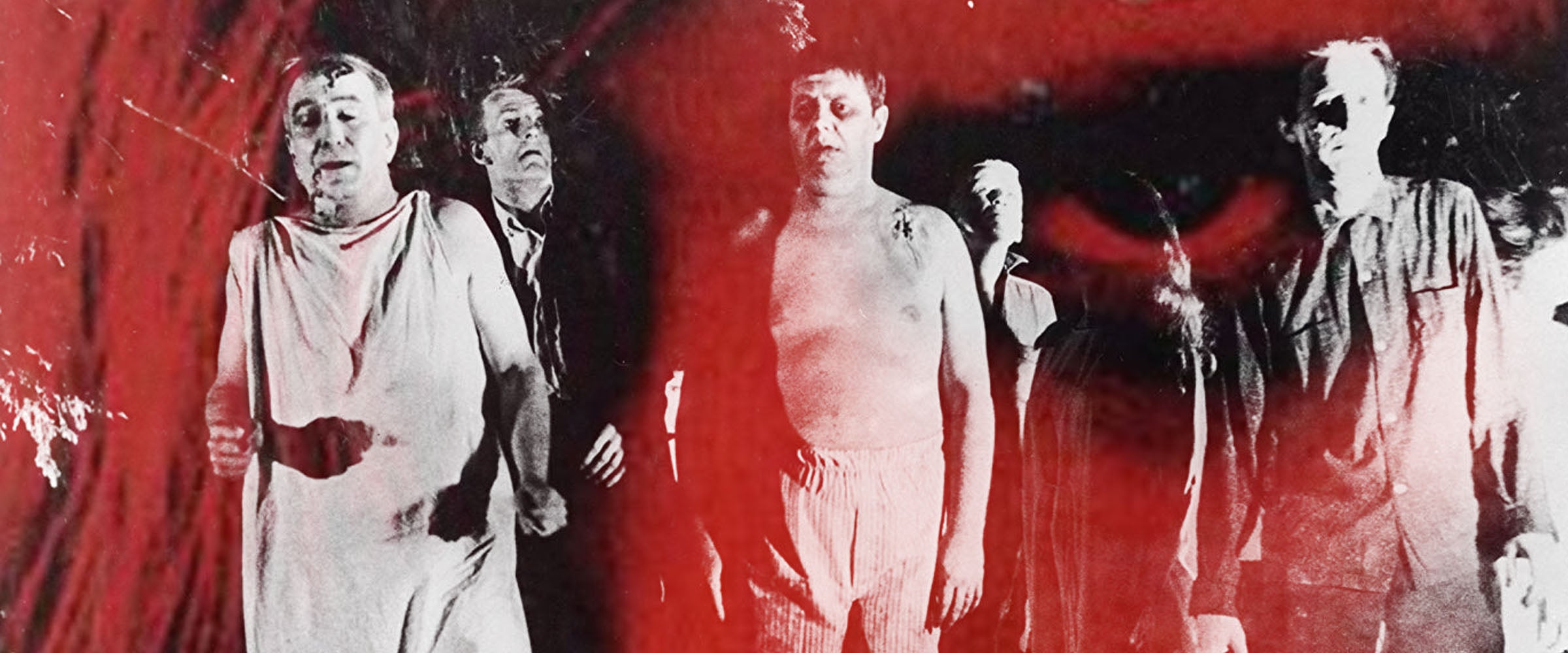“We have met the enemy and he is us.”
This was not the original phrase. A year into the War of 1812, winning a decisive naval victory against the British on Lake Eerie, Commodore Oliver Hazard Perry declared: “We have met the enemy, and they are ours.” He was boasting of captured ships, but the word “ours” connotes a weird kinship aside from possession — accidental acknowledgement that the Americans and Brits had barely diverged as peoples, and that both were rapacious colonizers. (The battle also happened to weaken any hope of a Native American confederacy to challenge the westerly creep of white settlers.)
Perhaps that inner tension — we’re the same, but killing one another — was why the quote updated well in cartoonist Walt Kelly’s introduction to his 1953 collection The Pogo Papers, which included satires of Red Scare McCarthyism. “[W]e shall meet the enemy, and not only may he be ours, he may be us,” he wrote. By the early 1970s, the more streamlined “We have met the enemy and he is us” served as the slogan for anti-pollution posters. But before then, in 1968, as Vietnam was plunged into bloody chaos and radical protest gripped the globe, an independent B-movie made for a little over $100,000 exemplified the paradox like nothing before or since.
This was George A. Romero’s Night of the Living Dead, a 96-minute masterpiece of horror that reshaped the genre while gifting it with villains that never went out of style: vacant, animated corpses.

Romero didn’t invent zombies (a word never uttered in the film) but drew on previous movies and books that borrowed from Haitian voodoo. His innovation was to move the action from exotic locales to his own backyard — rural Pennsylvania — and release the living dead from any sorcerer’s spell. His zombies are simply there, the mechanism of their awakening largely unimportant. They are your neighbors, friends and family, voided of what once made them that, driven only to consume human flesh. The characters battle no shapeshifting monster nor army of invading Martians nor even a common vampire — just other people’s bodies. We have met the enemy and they are us.

You see where this is going, don’t you? Night of the Living Dead is considered “timeless,” which is a way of saying it has never stopped being timely. Half a century after it played to audiences expecting lighter, less grisly fare — Roger Ebert himself recounted how adolescents appeared traumatized by the experience — America is riven with the same conflicts it leverages for narrative. Since well before November 2016, liberals and progressives were struggling to understand how the people closest to them have come to attack democracy en masse, embracing nihilist politics and ideological autopilot.
In one of many uncanny parallels, it was white voters in the countryside surrounding Pittsburgh, where Night of the Living Dead is set, that proved instrumental in swinging the state for Trump. Like Romero’s zombie horde, this base does not represent some fresh new insurgency but the return of an old, familiar and mundane group: the usual Republicans. As Henry Olsen, a senior fellow at the Ethics and Policy Center, writes: “The sheer ordinariness of Trump’s coalition is impossible to overstate.” Zombies are outwardly banal — they blend right in — but still behave abnormally.
Meanwhile, the fringe-right elements in power have dedicated themselves to painting opponents and scapegoats with the same brush: They complain of the deep state and media as legions of insatiable evil, sound alarms about leftist “mobs” and, most horribly, sow fear over “swarming” or “invading” migrants. Indeed, Trumpworld is braced for the possible arrival of starved, slow-moving refugees at the U.S.-Mexico border as if it’s a zombie onslaught, with thousands of troops dispatched to symbolically block their entry. When Trump tweets hysterically of how frightened we ought to be of the caravan, he may as well be reciting Night of the Living Dead’s infamously creepy catchphrase:
“They’re coming to get you, Barbara!”
Of course, Romero was no racist — far from it. All the zombies are pale, colorless, and the one person up to the task of fending them off is Ben, a levelheaded and hyper-competent black man stuck in a farmhouse with a variety of useless white folks who seem to resent his natural leadership. If that doesn’t immediately call Obama to mind, then actor Duane Jones’ sterling performance of a pragmatist under intolerable pressure will. Revolutionary as it was to cast an African-American in a lead role among a white cast, Romero has said that Jones simply gave the best audition. Lucky he did, because this version of Ben gives the movie some truly vicious torque, drawing attention to what would become a central trope of zombie lore: Your fellow survivors, in their stupidity and mania, are a threat coequal to the one banging down your door.

Ben’s ultimate fate would be chilling no matter the actor’s race; his blackness, however, transforms it into commentary on America’s shameful history of racial terror. After lasting out the night, he’s taken for undead by a posse hunting down zombies and casually shot on sight, his body then thrown on a bonfire. The film dissolves into a grainy montage of mass-murder cleanup that blurs the imagery of Vietnam newsreels and postcards commemorating the lynchings of African-Americans — this at the end of a decade of civil rights movements and political assassination.
It resonates as well in the age of unprovoked police violence and Black Lives Matter. Then, as now, it was “shoot first and don’t ask questions later.” Whether Ben has actually turned zombie is of little interest to his killers; what matters is that he can be killed, that nobody will be held to account.
Is there any escape from this? Not in Romero’s universe. The many sequels he made continued to scratch at the social mores of their decades, eventually settling into anti-capitalist critique (one takes place in a shopping mall, another in a skyscraper fortress where the mega-rich luxuriate while the poor are sent to scavenge their supplies in zombie-infested outerlands).
But none hint at a cure to the underlying plague — and that may be the genius of the expansive dread they generate. The scariest element of Night of the Living Dead is not the fumbling attacks, and not the increasingly dire radio broadcasts. What haunts you is the aftermath of a death, when the zombies quietly pull apart your limbs, tussling over the entrails, and gnaw you down to the bone.
It is a vision of the past cannibalizing the present, or maybe the present consuming the future. It could be about our refusal to face the genocide and atrocity committed in America’s name; it could speak to the unsustainable plunder of our planet for a few greasy spoils. It is all these things and a hundred others, and you cannot forget it.
When people today trade whispers of a second civil war, this is what they’re thinking of: Less of a fight with distinct sides than some atavistic rage of all against all, with no objective besides the elemental: food, shelter, fire, survival. Between healthcare, wealth inequality and the march toward a minority-rule ethnostate, we’re already mired in that zero-sum calculation. It’s not good enough to have anything: Someone else must also be deprived. Romero’s great cynical prophecy was that this nation would not “come together” in a time of crisis, as our elected officials exhort us to when they aren’t amplifying divisions. Instead he has us betray and deny to the bitter end, abandoned by the institutions we always thought would save us, waiting to wake up screaming.
Waiting, and waiting, and waiting.

